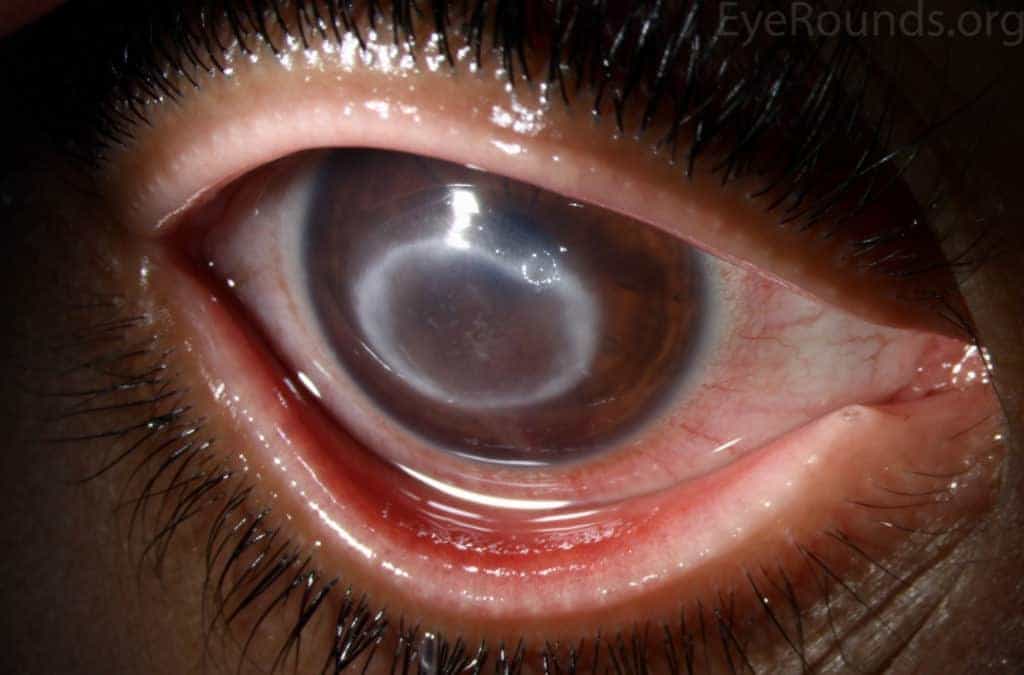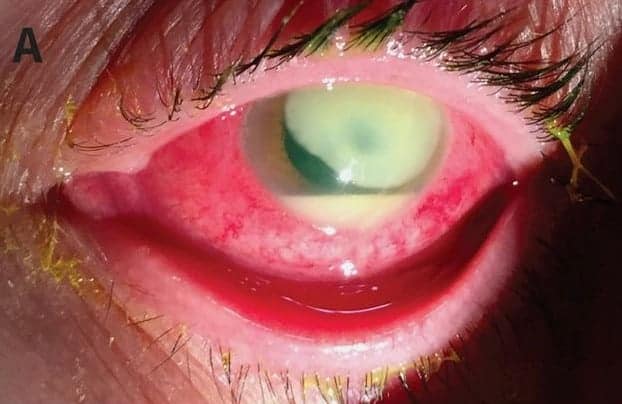
Acanthamoeba & Pseudomonas Infections
May 15, 2020

Once the summer heat arrives, everyone flocks outside to relax and catch some rays. Wearing contact lenses while in outdoor water sources is something that warrants extra caution. Acanthamoeba and Pseudomonas eye infections from contaminated water can be visually devastating. Keep reading to learn more about these harmful infections.
Breeding Grounds
Fresh water bodies (lakes, ponds, creeks), soil, swimming pools, and hot tubs are the perfect habitats for Acanthamoeba and Pseudomonas. If you get this water on your contact lenses, it can lead to trouble, especially if you reuse or sleep in the contacts.
It is also possible to have a contaminated water source that supplies a house. When this occurs, rinsing a contact lens case with tap water or showering while wearing contacts can be a vector for the organisms to reach the eyes. It is rare to have this type of contamination in the United States, however, there is an increased risk of exposure when traveling to lesser developed countries.

Atrocious Acanthamoeba
Acanthamoeba is one of the most common organisms in the environment, but typically does not pose an ocular threat until it is placed on the eye. This organism is free-living, but considered parasitic in nature. The spread can occur inside the contact lens case and then transferred onto the cornea from the contact lens itself. If swimming in contaminated water, Acanthamoeba can easily make its way onto the contact and stay there until the lens is removed and disinfected.

Petrifying Pseudomonas
Pseudomonas aeruginosa is the most common strain of Pseudomonas that affects the eyes. This bacteria has unique properties that allow it to easily adhere to the surface of a contact lens more readily than other types of bacteria. Unlike other common forms of bacterial conjunctivitis (or “pink eye”), this infection embeds itself into the cornea, which causes permanent scarring and vision loss.
Ocular Damage
Although Acanthamoeba and Pseudomonas infections are caused by two completely different organisms, both can cause permanent vision loss. Infectious keratitis, or inflammation of the cornea, is due to the presence of an infection and typically leaves a scar if not quickly treated.
The symptoms of these separate infections present in a similar manner.
– Painful, red eye
– Light sensitivity
– Foreign body sensation
– Tearing and/or discharge
– Cloudy vision
Hygiene is Protection
The large majority of Acanthamoeba and Pseudomonas infections are found in contact lens wearers, whose eyes were exposed to contaminated water or vegetation matter. In order to protect against these infections, proper contact lens hygiene is crucial.
Practice the following steps to minimize your risk of these harmful infections:
1. Wash hands before inserting and removing contact lenses
2. Only use appropriate contact lens solutions for rinsing, disinfecting, and storing lenses
3. Use fresh solution each day
4. Never sleep in contact after swimming
5. Dispose contacts as directed by your eye doctor